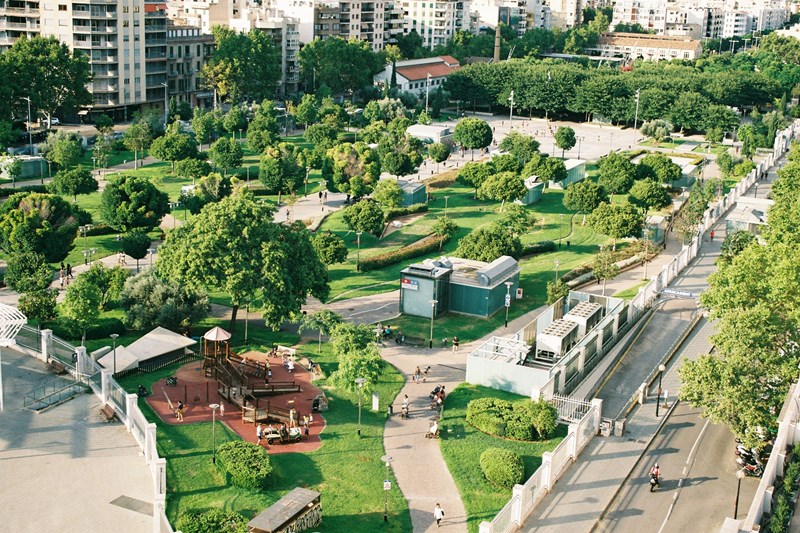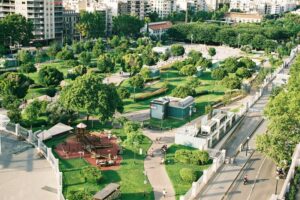
In an era where urbanization seems to know no bounds, cities around the world are facing an unprecedented challenge: maintaining the delicate balance between concrete expanses and natural ecosystems. Amidst this struggle, a new movement is emerging—one that champions the revitalization of urban green spaces as an essential component of modern city life. This movement, driven by both environmental necessity and human well-being, is reshaping how we think about and interact with our urban environments.
The Urban Green Space Revival
Historically, urban green spaces—such as parks, gardens, and greenways—were seen as mere luxuries or afterthoughts in city planning. However, recent trends have flipped this perspective, positioning these areas as indispensable to the health and vibrancy of metropolitan areas. Cities like Copenhagen, New York, and Singapore are leading the charge, integrating green spaces into the very fabric of urban life.
Copenhagen’s ambitious “Climate Resilient Neighborhoods” project exemplifies this shift. The city is transforming its streetscapes into “green infrastructure” by incorporating rain gardens, green roofs, and permeable pavements. These initiatives not only enhance the aesthetic appeal of the city but also mitigate flooding and improve air quality. Similarly, New York City’s High Line, a linear park built on a historic freight rail line, has become a celebrated example of how innovative urban design can breathe new life into neglected spaces.
Health and Well-being: The Green Connection
The benefits of urban green spaces extend far beyond their visual appeal. Research consistently shows that access to green spaces has profound impacts on physical and mental health. Studies indicate that people who live near parks and natural areas experience lower levels of stress, reduced symptoms of depression, and improved overall well-being. These findings are not just theoretical; they are supported by real-world observations. For instance, the creation of new parks in high-density neighborhoods in Seoul has been linked to significant improvements in residents’ mental health.
The link between green spaces and health is particularly relevant in an age where mental health issues are on the rise. The simple act of spending time in nature—whether it’s a stroll through a park or a sit on a green bench—can serve as a powerful antidote to the stresses of modern urban life. Moreover, green spaces encourage physical activity, which is a crucial factor in combating obesity and related health issues.
Environmental Benefits: More Than Just Pretty Landscapes
Beyond their aesthetic and health benefits, urban green spaces play a critical role in environmental sustainability. They act as natural air filters, absorbing pollutants and releasing oxygen, which is vital for improving urban air quality. Trees and plants also help regulate temperatures, mitigating the urban heat island effect—a phenomenon where city areas become significantly warmer than their rural counterparts due to human activities and infrastructure.
Additionally, green spaces contribute to biodiversity by providing habitats for various species. Urban parks can support a surprising array of wildlife, from birds and insects to small mammals. This biodiversity not only enriches the urban experience but also supports ecological balance.
The Social Dimension: Building Community through Green Spaces
Green spaces are not just about nature; they are also about people. They serve as communal areas where individuals from diverse backgrounds can come together, fostering social interaction and community cohesion. Parks and community gardens often become hubs of local activity, where people engage in everything from casual conversations to organized events and cultural activities.
Community involvement in the creation and maintenance of green spaces further strengthens these bonds. Many cities have embraced the concept of “community-led green projects,” where residents play an active role in designing, planting, and caring for local green areas. This participatory approach not only ensures that the spaces meet the needs of the community but also builds a sense of ownership and pride among residents.
Challenges and Future Directions
Despite the clear benefits, integrating green spaces into urban environments is not without challenges. Limited space, budget constraints, and competing priorities often pose significant hurdles. However, innovative solutions are emerging. For example, “vertical gardens” and “green walls” offer ways to incorporate greenery into high-rise buildings, while “pocket parks” utilize small, underused areas to provide green relief.
The future of urban green spaces will likely involve a blend of traditional park design and cutting-edge technologies. The concept of “smart parks,” which incorporates technology to enhance the functionality and safety of green spaces, is gaining traction. Features such as smart lighting, real-time air quality monitoring, and interactive elements can make these spaces more appealing and useful.
Future
The renaissance of urban green spaces represents a profound shift in how we envision and create our cities. As we continue to face environmental and health challenges, the role of these spaces in fostering well-being, sustainability, and community cannot be overstated. By prioritizing the integration of nature into our urban landscapes, we are not only enhancing the quality of life for city dwellers but also paving the way for a more resilient and harmonious future.



